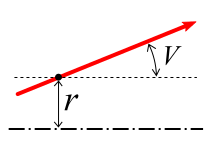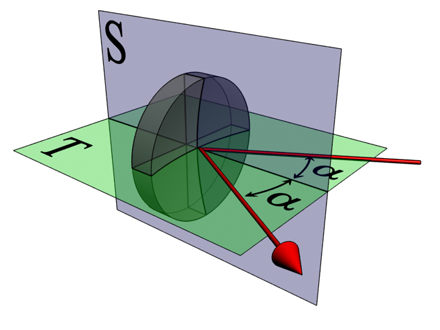Glossary
Stability Parameter
Stability parameter is a value showing if a system can support stable laser operation. It can be calculated in two ways:
P = (A + D) / 2
P = 1 — ((A + D) / 2) 2
where A and D are system round-trip matrix components. In the first case the system is stable when the parameter value is in range from -1 to 1. In the second case the system is stable when the parameter value is in the range from 0 to 1.
Propagation Direction
rezonator supposes a beam is propagating from left to right in the schema. For single-pass schema, it is as if a light source would be located just before the leftmost element of the schema and is directed to the right side.
For resonators, it is just the chosen primary direction. In standing-wave resonator, the beam reflects from the rightmost element and does round-trip returning to the leftmost one.
When the round-trip matrix is calculated, elements’ matrices are multiplied starting from some reference element and in the direction opposite to beam propagation, as the ray-matrix approach supposes.
Ray Vector
Ray vector represents a geometric beam approximation when a beam described by two parameters - a distance from the optical axis r and an angle between the beam and the optical axis V.
When a beam traverses an optical system, parameters of the output beam can be expresses from parameters of the input beam and system’s ray matrix M = [A, B; C, D].
rezonator can compute ray vector propagation in single-pass schemas, see Pump mode: Ray vector.
Working Planes
Tangential Plane, T-plane
The tangential plane is the plane containing all the resonator’s elements (the plane of an optical stand). Beams are refracted or reflected in this plane.
Sagittal Plane, S-plane
The sagittal plane is the plane containing the element’s optical axis and perpendicular to the tangential plane.





